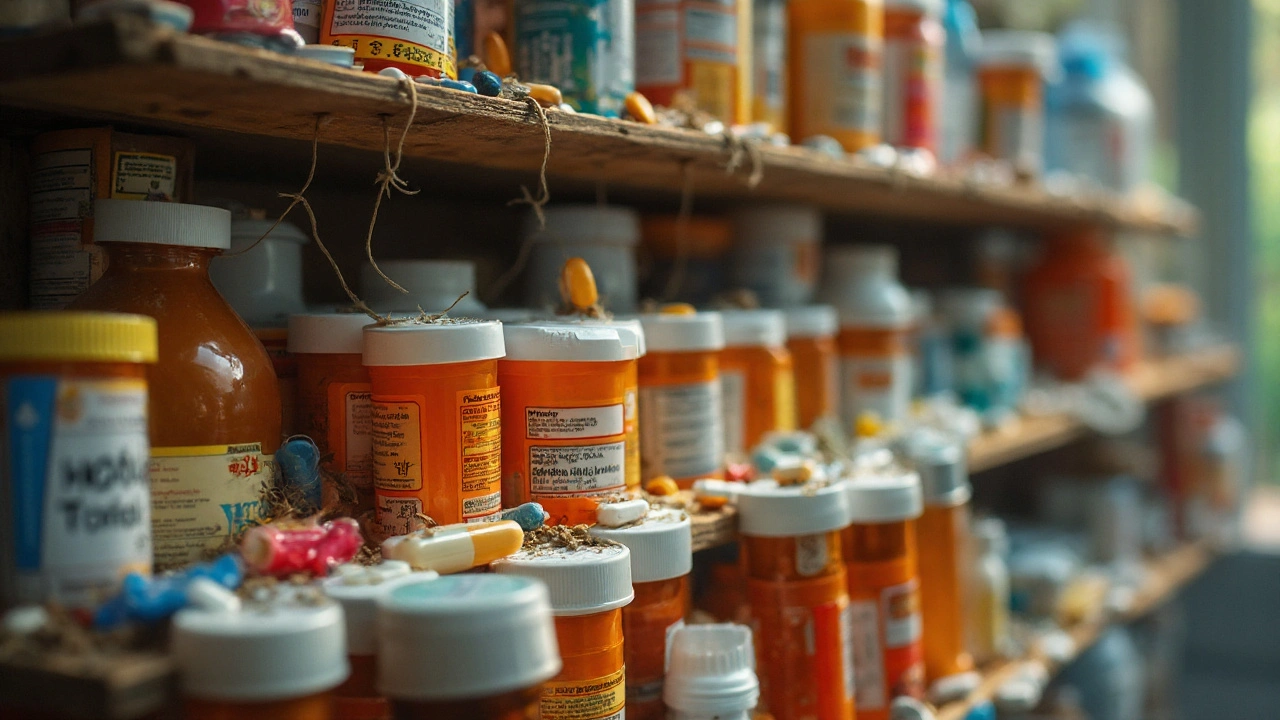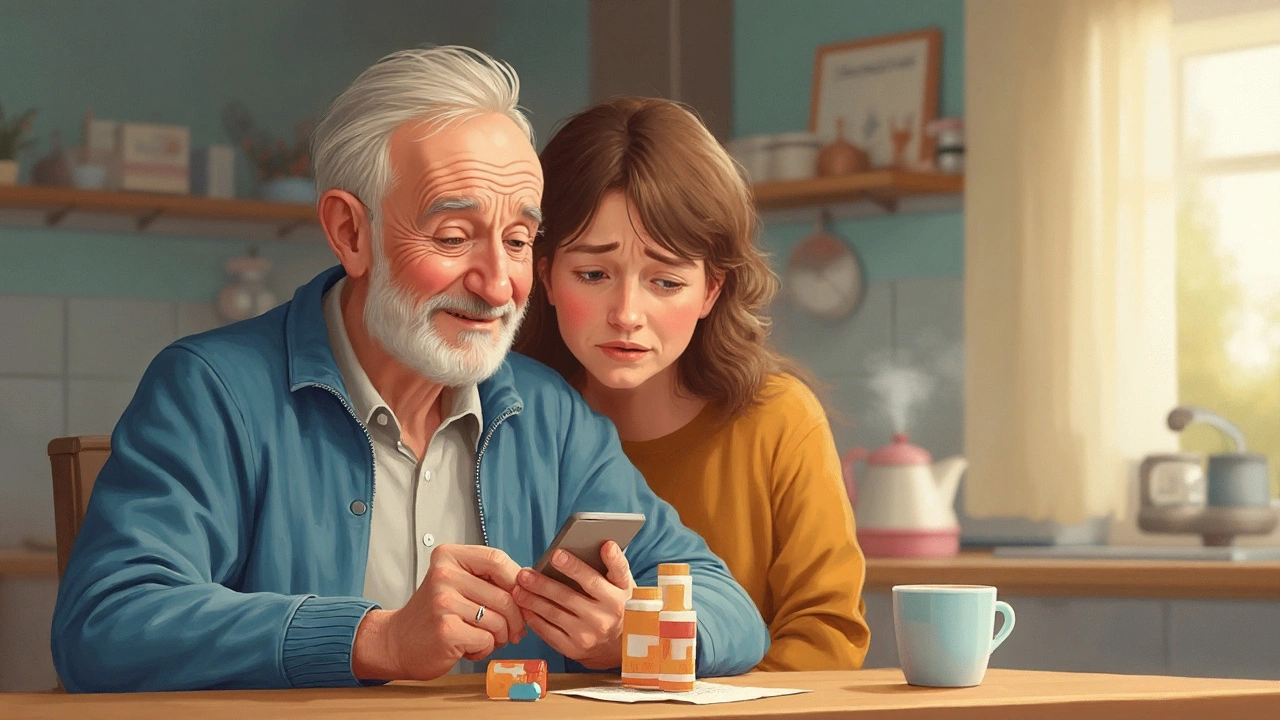
You’d think the pills in your kitchen cupboard or bathroom drawer only get noticed when you’re feeling under the weather. The truth is, what happens inside your body when you mix those pills is way more dramatic than most people realise. Some combinations work just fine. Others could put you in A&E. A strange stat – in 2024 in the UK, almost one in five adults over 65 took five or more medications every day. That’s a lot of opportunity for mischief. Forget TV warnings – drug interactions are silent troublemakers, and they don’t care if you’re following the rules. They show up without permission, turning harmless tablets into risky cocktails.
What Are Drug Interactions? The Simple Truth
Nearly everyone’s been given at least two different prescriptions in their lifetime. But not everyone hears about the chemistry that happens when they party together inside you. Drug interactions are when one medicine (or supplement, or food, or alcohol—yes, even your after-work pint) changes how another works. That could make it work too well, not enough, or not at all. Sometimes it turns a side effect into something serious. The most common types fall into three groups: drug-drug, drug-food, and drug-other (like alcohol or herbal remedies). Here’s a shocker: grapefruit juice isn’t just for breakfast. If you drink it with certain statins or blood pressure pills, it can block enzymes and send drug levels soaring in your blood. Weird, right?
Drug interaction might sound like boring science, but imagine this: your painkiller and cold medicine could team up and push your blood pressure so high you start sweating for no reason. Or your allergy tablet slows down your heart medicine, leaving you dizzy on your way to the shops in Broughty Ferry. Some people learn this the hard way after fainting in the Tesco aisle. Most don’t get much warning. According to NHS data from Scotland in 2023, about 6% of emergency hospital admissions among older adults were linked to bad drug reactions, often due to interactions. The risk jumps as you add more meds, and with folks living longer, polypharmacy (fancy term for ‘many drugs at once’) is on the rise.
This is not just a problem for pensioners. Mixing certain antibiotics with antidepressants can cause heart rhythm problems. Women taking oral contraceptives can have an accidental pregnancy because an antibiotic changes how their body handles hormones. Even something like St John’s Wort (a natural remedy for mood) can ruin the effect of anti-HIV drugs or lead to nasty surprises with epilepsy meds. The simple truth: most people don’t know, and doctors can’t always catch every possible match. Supermarkets, chemists, dodgy websites—pills come from everywhere. That’s a recipe for unexpected trouble.
If you want to keep it dead simple, remember: drugs can boost or block each other. It can be as harmless as making you sleepy when you didn’t plan to be, or as bad as stopping your heart for a couple beats when you’re only trying to control your diabetes. So ask your pharmacist or your GP. Sometimes even a Google search is better than guessing (just stick with trusted sites—the NHS or trusted hospital web pages, never random forums).
Real Dangers: Stories, Stats, and What Can Actually Go Wrong
So what’s the worst that can happen if you ignore drug interactions? Real talk: people have ended up in intensive care, gone into seizures, or had strokes and heart attacks, just because one pill made another go nuts. You might remember a news story from Glasgow in late 2023, where a perfectly healthy woman doubled up on her blood pressure meds because of confusing labels. Within two hours, her blood pressure plummeted so quickly she blacked out in her home. Emergency crews traced it back to a painkiller that reinforced the effect of her usual tablets. Not rare—this happens every week in the UK.
Take anticoagulants, the blood-thinners often given to prevent strokes—mix them with common antibiotics or over-the-counter anti-inflammatories like ibuprofen, and you massively increase bleeding risk. That means a simple nosebleed could turn dangerous, or a bruised leg could start swelling because blood refuses to clot. Or—an example closer to home—mixing anti-anxiety medication with alcohol can magnify drowsiness so much you’re a genuine road hazard, even if you feel ‘fine’.
| Drug Pair | Possible Interaction | Potential Consequence |
|---|---|---|
| Warfarin + Antibiotics | Increased blood thinning | Serious bleeding |
| ACE Inhibitors + Diuretics | Lowered blood pressure | Fainting, kidney issues |
| Antidepressants + Painkillers | Serotonin overload | Confusion, seizure |
| Statins + Grapefruit Juice | Enzyme blockade | Liver damage, muscle pain |
| St John’s Wort + Oral Contraceptives | Reduced hormone effectiveness | Unplanned pregnancy |
Those are just examples, but you get how broad the danger can be. Here in Dundee, there’s been a push at local chemists (especially since 2022) urging people to do a ‘medication check’ every time they fill a new prescription. That’s for good reason: according to the Royal Pharmaceutical Society, reviewing your meds even once a year drops your risk of serious interactions by up to 50%. Not bad for a quick chat.
Side effects from drug mischief might not show up right away. Sometimes they build slowly. Consider something like fatigue, confusion, or muscle weakness—could be blamed on ‘just getting older’, but sometimes it’s really drugs fighting inside you. Even mixing vitamins or over-the-counter remedies can create trouble: calcium supplements mess with some antibiotics, and cough syrups with codeine add up if you’re already taking morphine-type meds for pain. The bad news? Nobody’s immune, not even folks who never miss a dose.

Spotting and Preventing Drug Interactions: Smart Tips That Actually Work
No magic gadgets here, just solid habits. You don’t have to be a medic to keep yourself safe from nasty surprises. Step one is the easiest: keep a list (on paper, on your phone, wherever) of every single medicine, vitamin, or supplement you use. This makes it dead simple when you’re at the doctor or picking up something new at Boots. Include things like herbal teas or occasional antacids—it all counts.
If your GP or pharmacist doesn’t automatically ask about your other meds, just tell them. ‘Will this clash with my blood pressure tablets?’ is a good opener. It sounds basic, but most drugstores in the UK use databases that instantly flag the worst offenders—but they can only check what they know about. Pharmacies in Scotland rolled out new digital systems in late 2023 that ping warnings even about possible food-drug problems, but again, if no one knows you’re taking turmeric pills alongside arthritis meds, nothing gets flagged.
- Talk to your pharmacist regularly, especially when you’re prescribed something new.
- Don’t randomly double your dose if you think a pill isn’t working faster—two paracetamol don’t become super-paracetamol.
- Be careful with alcohol—the label may warn you, but interactions don’t always care if it’s Saturday night or not.
- Keeps meds in original packaging when possible. It helps in a pinch if you need advice or emergency help.
- Be upfront about everything you take, even if it feels like ‘just vitamins’ or ‘natural stuff’.
- Don’t stop meds suddenly because you read something scary. Always ask before making changes.
- Check expiration dates—old meds might not mix the same way as fresh ones.
Family and friends matter here too. If you’re the ‘reminder’ for a loved one, help them keep records or go along to appointments. NHS Scotland offers an online ‘Medicine Sick Day Rules’ card (especially important for common drugs used in diabetes, blood pressure, and heart failure). Handy to print and keep in your wallet.
You don’t have to figure it all out alone. New tech like the NHS Scotland Medicines: Information and Support mobile app lets you scan barcodes and get plain-English results. Pharmacists can print easy-read interaction guides, and GPs have access to software called GPASS (General Practice Administration System for Scotland) to double-check before you even leave the room. It’s worth the extra minute.
The Future of Safe Medication: Progress, Challenges, and Why You Should Care
There’s some good news. The past five years have seen a proper jump in awareness about drug interactions, thanks to both shocking headlines and smarter software in the NHS. Community pharmacies now get paid for reviewing patients’ full medication list, and this has led to real drops in emergency admissions (the last Scottish Government report showed nearly 2,000 fewer incident admissions in 2024, compared to 2022 – that’s not just saving money, that’s saving real lives). Dundee’s Ninewells Hospital pushed out ‘medicines reconciliation’ at every patient visit, cutting down error rates in older patients by nearly 18% last year.
Researchers are already working on personalised prescribing—think gene tests at your GP surgery in the next 10 years to figure out what drugs fit your unique chemistry. That means fewer bad reactions in future. But until that’s main street reality, the boring stuff like double-checking your shopping bag and not hiding your herbal teas from your doctor matters most.
England launched the ‘Yellow Card Scheme’ years ago, where anyone can report bad reactions or sneaky side effects. Scotland’s version gets thousands of reports a year. Every report makes the guidance smarter and helps update pharmacy warning systems. Next time you spot a weird symptom after starting a new pill, report it. You might save someone else a bad day down the line.
The challenge? Fast-moving drugs markets, DIY supplement shopping from the web, and so many people getting care from more than one doctor. But you’ve got a secret power: curiosity. Read the leaflets, ask the questions, compare stories. One in four of us now takes at least three regular meds, and that number's only going up. The more you know, the harder it is for a silent drug clash to sneak past you and cause havoc. Simple steps, real lives protected—that’s why drug interactions matter, whether you live in Dundee or anywhere else.
